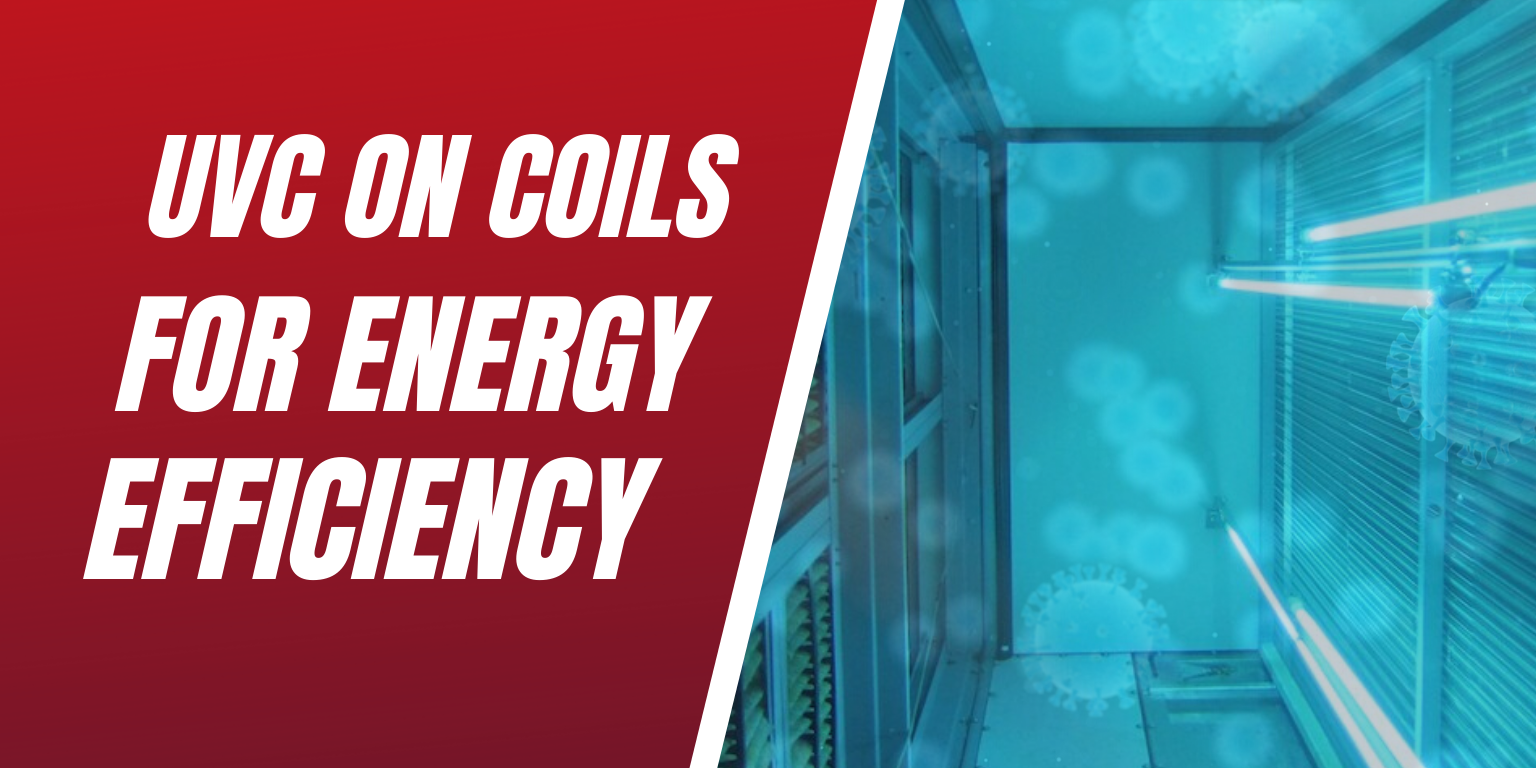
When the ductwork in a building is dirty it becomes the perfect breeding ground for bacteria, viruses, fungi, and molds, which are then spread throughout the building’s air by the HVAC system. Biofilms form when mold and bacteria adhere to surfaces in moist environments by emitting a slimy, glue-like substance. Biofilms can be a thin layer or inches thick, depending on environmental conditions, just like in your HVAC. This forces your HVAC units to work harder, shortening the lifespan of your equipment and increasing your energy costs. And in places where occupants are more likely to have a weakened immune systems, such as schools and hospital, a dirty ductwork can cause issues with infection control. Not to mention, if mold, bacteria and other biocontaminants is allowed to spread, this can also impact the health and productivity of healthy building workers.
Fortunately, Germicidal UVC Light Disinfection for coils is designed to save energy and maintenance costs associated with a building’s HVAC System. Mold (biofilm) on coils of only 0.002 can reduce efficiency by 37%. Ultraviolet germicidal irradiation (UVGI) is the most cost-effective and practical solution. Our tubular rack system offers ease and flexible installation. It includes an advanced multi-voltage water-resistant power supply. The system also improves indoor air quality by sterilizing airborne bacteria, viruses and allergens.
Significant Benefits for a Wide Array of Industries:
Healthcare – Germicidal UVC can help protect your building, your patients, and employees while reducing energy consumption and maintenance costs. Our healthcare customers have realized reduced hospital acquired infections, cross-contamination, reduced hospital stays, as well as reduced liability.
Schools & Institutions – With 14 million missed school days each year, a healthy school building is essential. Good indoor air quality means healthier students, faculty, and staff. UVC for HVAC protects your campuses buildings, while also reducing energy consumption and maintenance costs.
Commercial Buildings – Support your financial goals by significantly reducing your HVAC operating costs, decreasing water use and improving indoor air quality with UVC. Building owners can expect increased property values and reduced liability. Property managers will see higher occupant satisfaction and productivity as well as marketing differentiation.
Food Processing – UVC enhances food safety through mold bacteria and virus control, extending product shelf life and improving quality and production yields. Germicidal UVC helps to avoid recalls and mitigation, reducing sales loss, brand damage and liability.
Germicidal lights are simple, effective ways to curb bacterial and viral growths. These specialized lamps produce an ultraviolet (UV) light that disrupts growth and deactivates existing growths, aiding in the disinfection of surfaces, water and more. Using one in your facility can help improve everything from air quality to the health and well-being of you and your occupants. By treating the air circulating in your heating and cooling system, UVC germicidal lamps can kill mold and destroy airborne viruses and bacteria that, ultimately, lead to colds, flu and other illnesses. This can keep you and your family or staff healthy. Many experts recommend adding in an air purifier to filter even more germs and bacteria from your indoor air.
For example, the American Electric Power (AEP) in Tulsa, OK, eliminates employee IAQ complaints as well as their costly coil cleaning program and maintenance staff exposure to chemicals. By bathing the evaporator coils in Steril-Aire UVC lights, they have also experience a substantial power consumption reduction, estimated at a conservative 28% drop in total A/C system energy usage.
PROJECT OVERVIEW
- Eliminated four-times-a-year coil, drain pans, and plenum cleaning programs
- AEP air handling system has cut back gradually from four 300-ton chillers to only two
- Installed UVC emitters that helped solve their mold/IAQ problem
In another case, it was found that a typical fin design restricts the effectiveness of pressure spraying for coil cleaning and simply “packs” the biological matter further into the coil interior resulting increased air pressure drop and reduced air flow.
PROJECT OVERVIEW
- System airflow went from 16,000 to 17,400 cfm, an 8.6% increase
- Wet and dry bulb coil leaving temperatures also dropped
- Provided a greater temperature differential between entering and leaving air
- This combination of factors has brought about an increase in capacity
For more information on UVC Light Disinfection in HVAC Systems, stay tuned for our webinar on UVC on Coils and ROI for Energy Efficiency!

